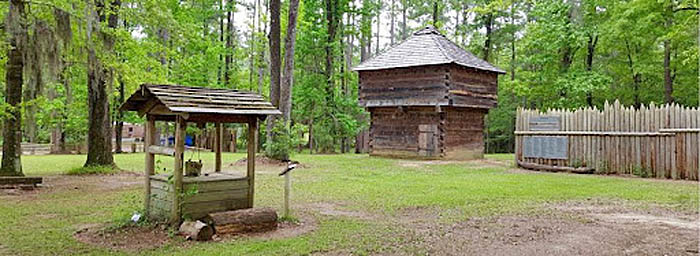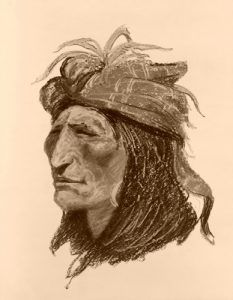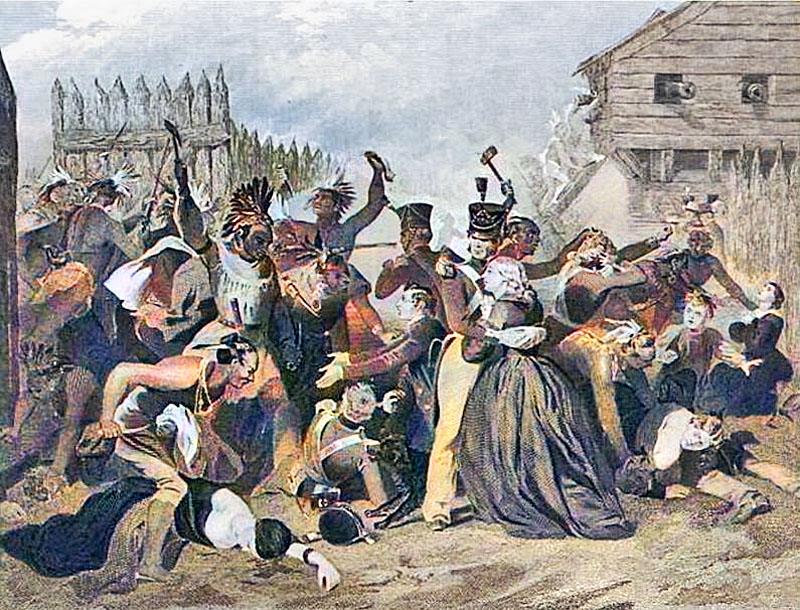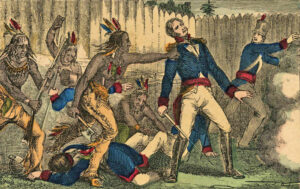Fort Mims, in Baldwin County, Alabama, was a settler defense established in 1813 during the Creek Indian War. Creek “Red Stick” warriors attacked, took, and destroyed the fort that year.
In the 1780s, southeastern Indians came under increasing pressure from the new U.S. government to cede land for white settlement, as American settlers wanted this land for farming.
At that time, the Creek Indians hunted hundreds of thousands of deer on their lands and depended on the deerskins for most of their income. They bartered the deerskins for cloth, guns, steel tools, and other manufactured goods.
Anxious to obtain the Indian lands, American politicians devised a plan of civilization, which called for U.S. federal agents to encourage Indian men to abandon hunting, adopt European-style agriculture, and focus on growing cash crops.
U.S. leaders hoped to assimilate the Indians into a way of life that freed up their vast hunting lands for American settlement. However, as the Americans implemented the plan, it created bitter divisions in Creek society between those willing to adopt new ways and those who wished to retain their traditional culture.
As America’s War of 1812 raged along the Canadian frontier and on the Atlantic Ocean, a different conflict erupted among the Creek Indians of present-day Georgia and Alabama. In 1813, people on America’s southwestern frontier were fearful. The Red Sticks faction (named for the red wooden war clubs they carried) of the Creek Indians opposed growing U.S. influence, sought to preserve traditional customs, and resisted European cultural influence and American expansion. They voted for war.
However, the Creek, living along the Tensaw River in present-day Baldwin County, had intermarried with European and American settlers and were close allies. The latter faction argued in favor of adapting to survive and received the support of American military forces under Major General Andrew Jackson.
Tensions grew, and many families along the Tombigbee, Tensaw, and Alabama Rivers took refuge in quickly fortified sites when hostile Creek Indians began to attack settlers. Fort Mims was built around the home of Samuel Mims, located on Lake Tensaw, about a mile east of the Alabama River. The fort included the Mims’ home, surrounded by a stockade encompassing a square acre of Mims’ property. The stockade had two strong gates, one on the eastern and one on the western side. A blockhouse was begun but never completed.
Inside the stockade, some 553 defenders assembled in the summer of 1813, including 265 soldiers, American settlers, U.S. allied Creek Indians, and enslaved African Americans. Major Daniel Beasley of the 1st Mississippi Volunteers commanded the military men at the fort. He was not a professional military officer but a lawyer by profession.
Early in the summer, the American militia, based at Fort Mims, intercepted the Red Stick Creek Indians receiving British military supplies from Pensacola, Florida, at the Battle of Burnt Corn in July 1813.
The Red Sticks then regrouped, and at noon on August 30, a force of 700 Red Sticks, led by Creek Chief William Weatherford, Shawnee leader Tenskwatawa, and the prophet Paddy Walsh, attacked Fort Mims during the midday meal. They rushed through the fort’s open gate and fired into the fort through poorly designed gun ports. Half of the remaining Mississippi Territorial Volunteers died with their commander, Major Daniel Beasley, in the first few minutes of the battle. Captain Dixon Bailey, a Creek, and his American and Creek militiamen held off the attack for four hours. The resistance ended only when the Red Sticks set fire to the fort’s buildings. More than 300 attackers and defenders died, including most of the women and children at the fort.
News of the attack spread quickly throughout the South, and troops from Tennessee, Georgia, and Mississippi Territory volunteers rallied to the “Creek War” by the following summer. The Redstick forces were cornered and defeated by Colonel Andrew Jackson’s army of 3,300 men at the Battle of Horseshoe Bend on March 27, 1814. On August 9, 1814, the Creek leaders met at Fort Jackson near Wetumpka, Alabama, and ceded 23 million acres of their land to the United States.
The Red Sticks assault on Fort Mims ranks as one of the greatest successes in Indian warfare. But the bloody battle forever changed the relationship of Americans with Indian nations. Continued outrage over the attack at Fort Mims contributed to the eventual forced removal of Creek and other Indians from the Southeast in the 1830s, in what is known as the “Trail of Tears.”
Today, the Fort Mims State Historic Site in Baldwin County, Alabama, commemorates the conflict. It features a log stockade, a replica of an 1800s blockhouse, and a split rail fence. It was listed on the National Register of Historic Places in 1972. An annual reenactment is held the last weekend in August. The Fort Mims Restoration Association operates the site at Fort Mims Road, Stockton, Alabama.
© Kathy Alexander/Legends of America, updated March 2024.
Also See:
Sources:
Alabama Historical Commission
Encyclopedia of Alabama
Fort Wiki
National Park Service – Fort Mims





